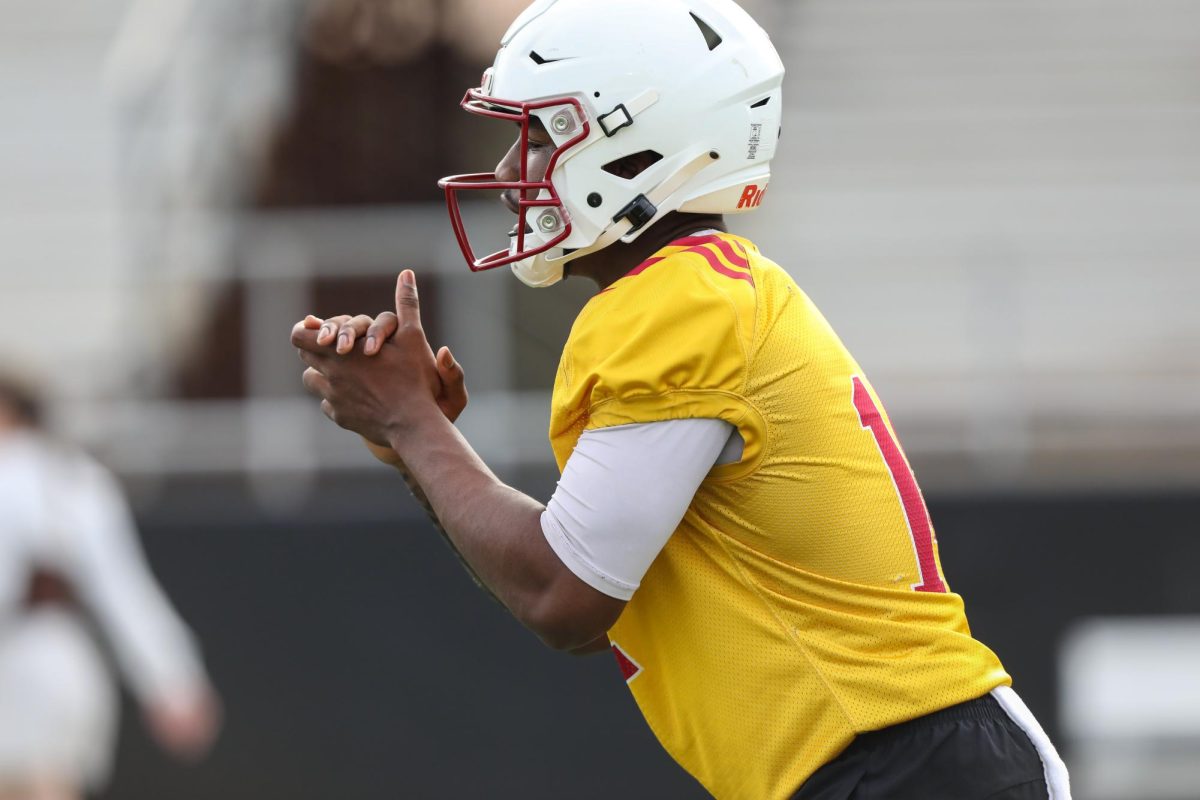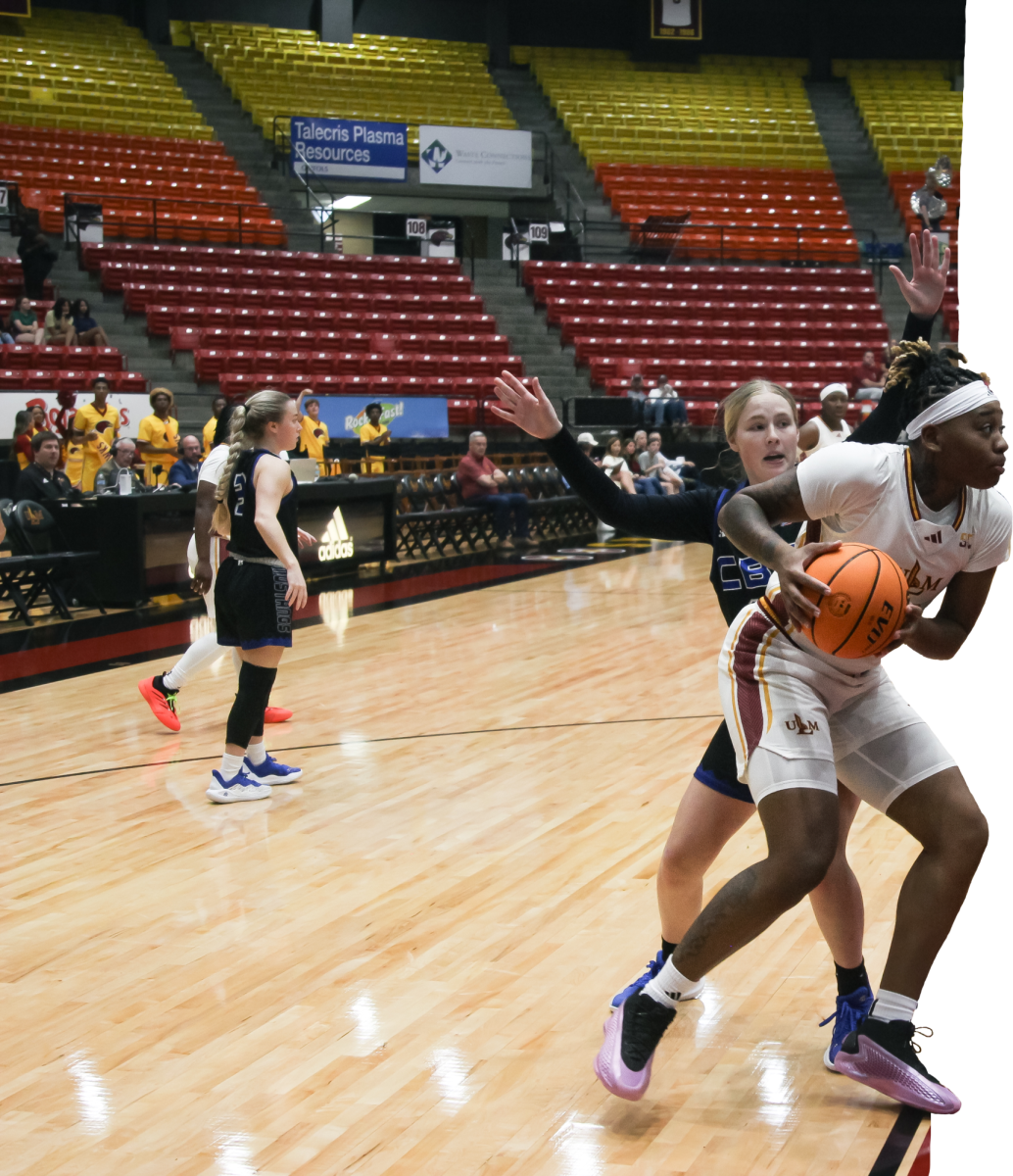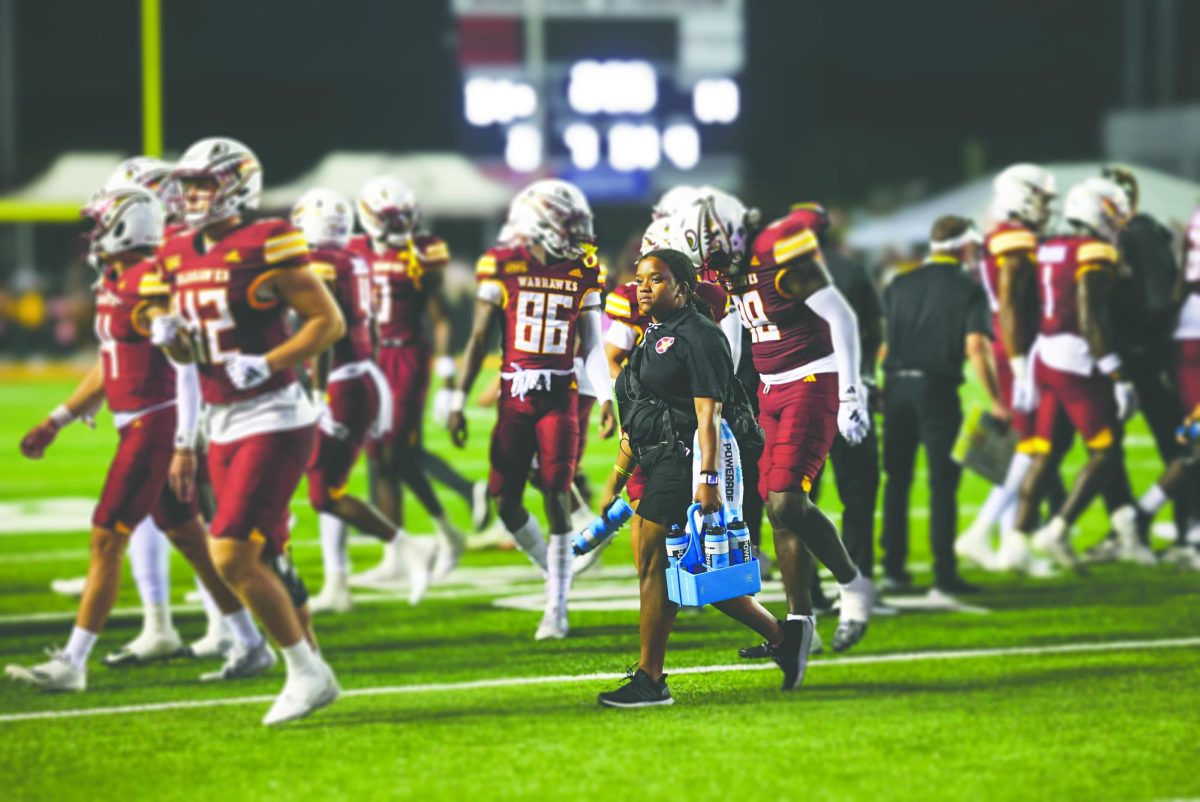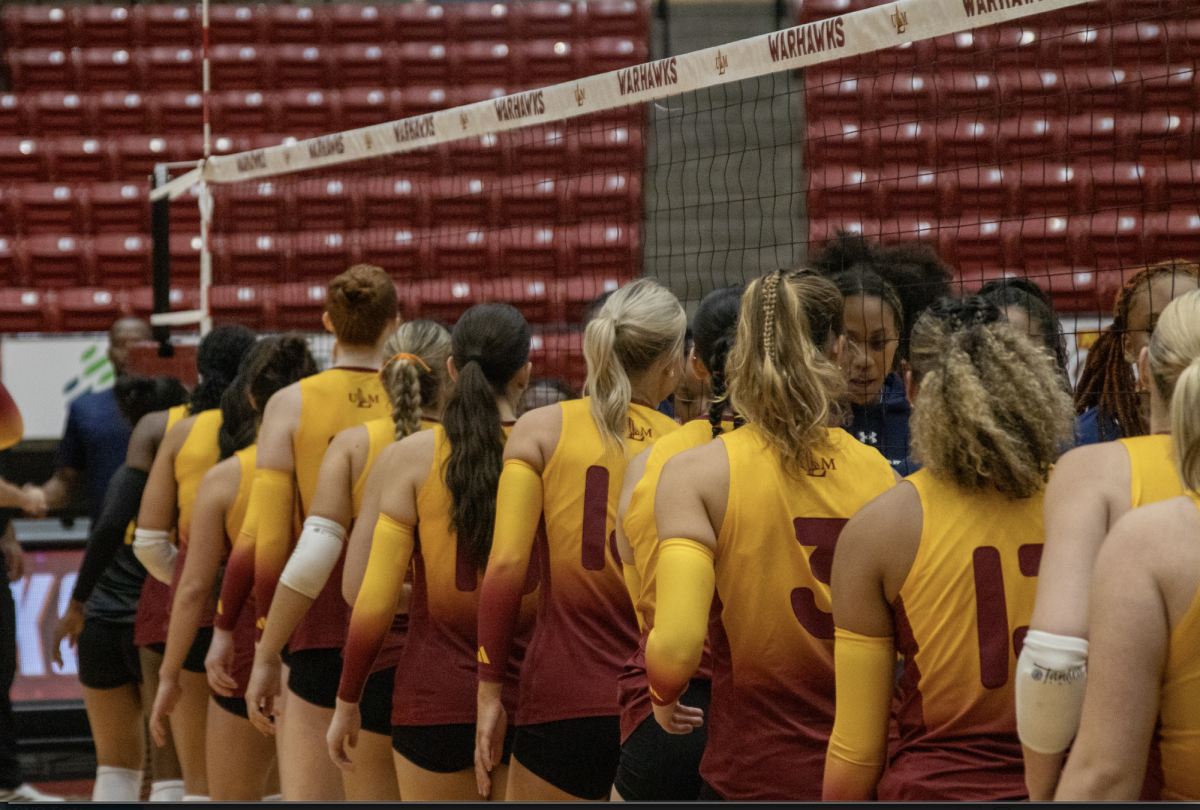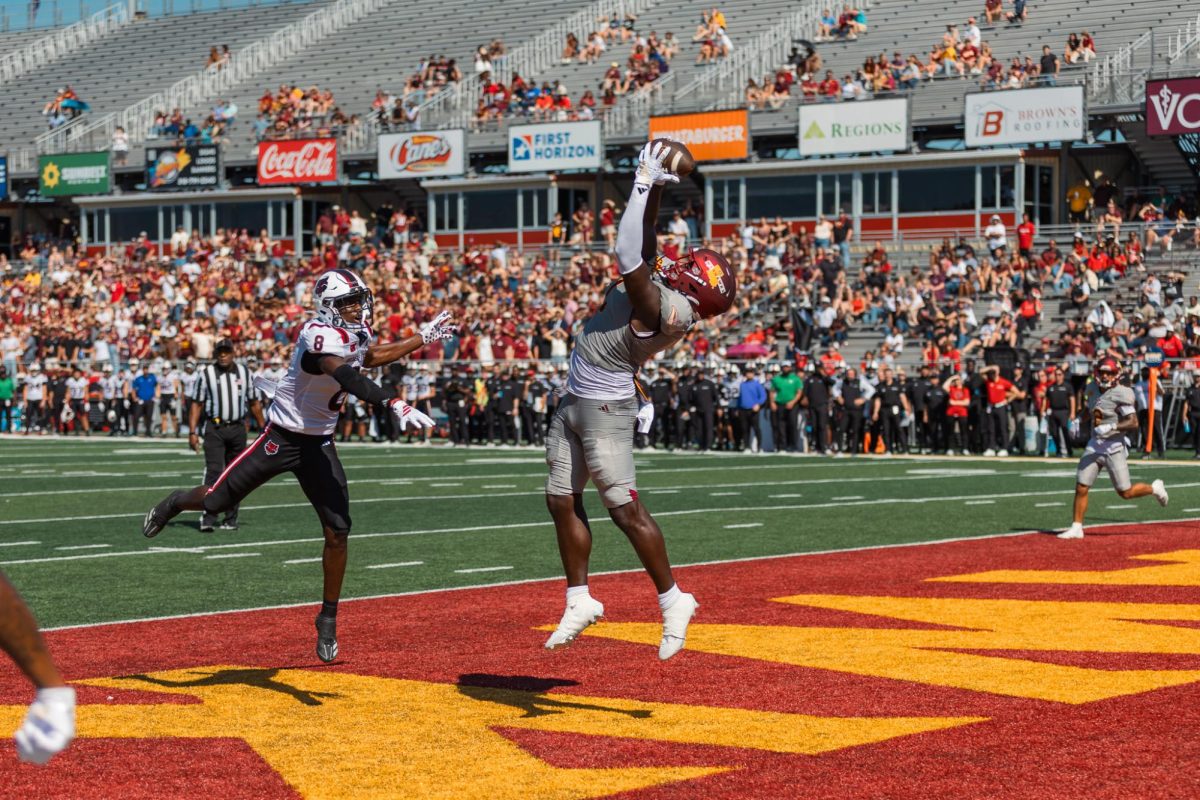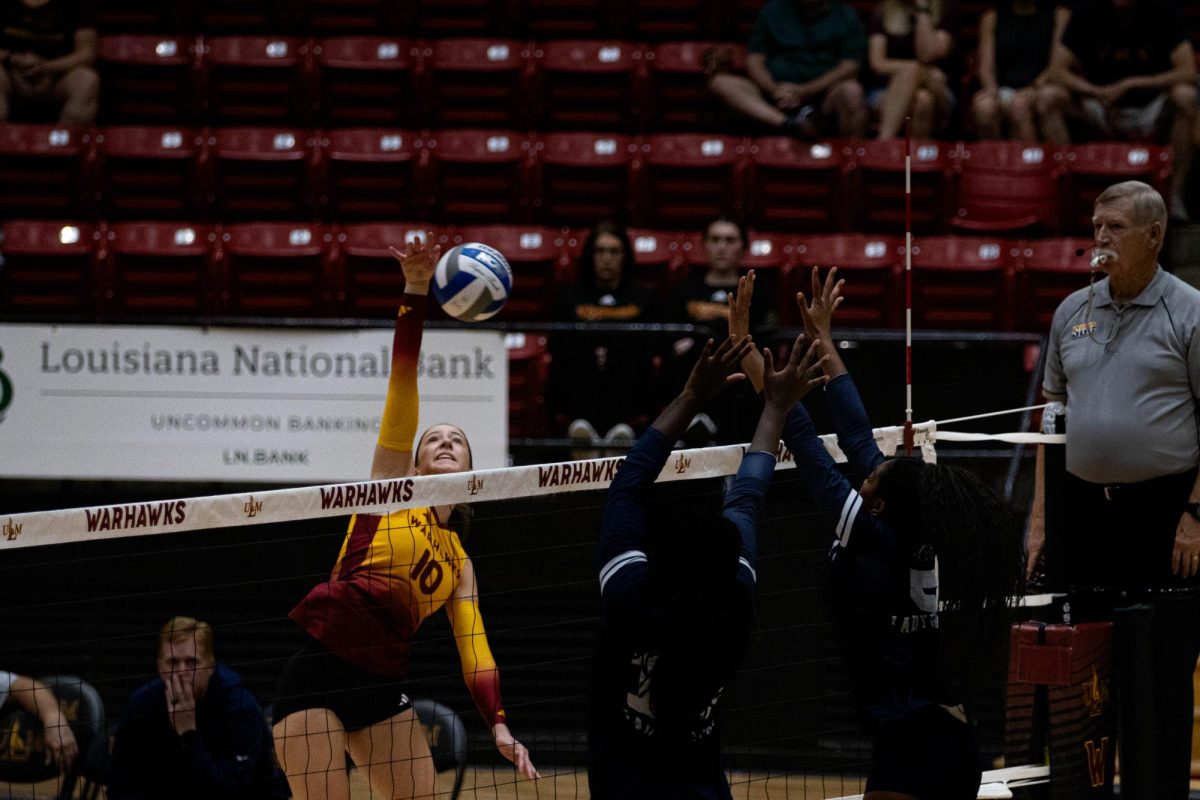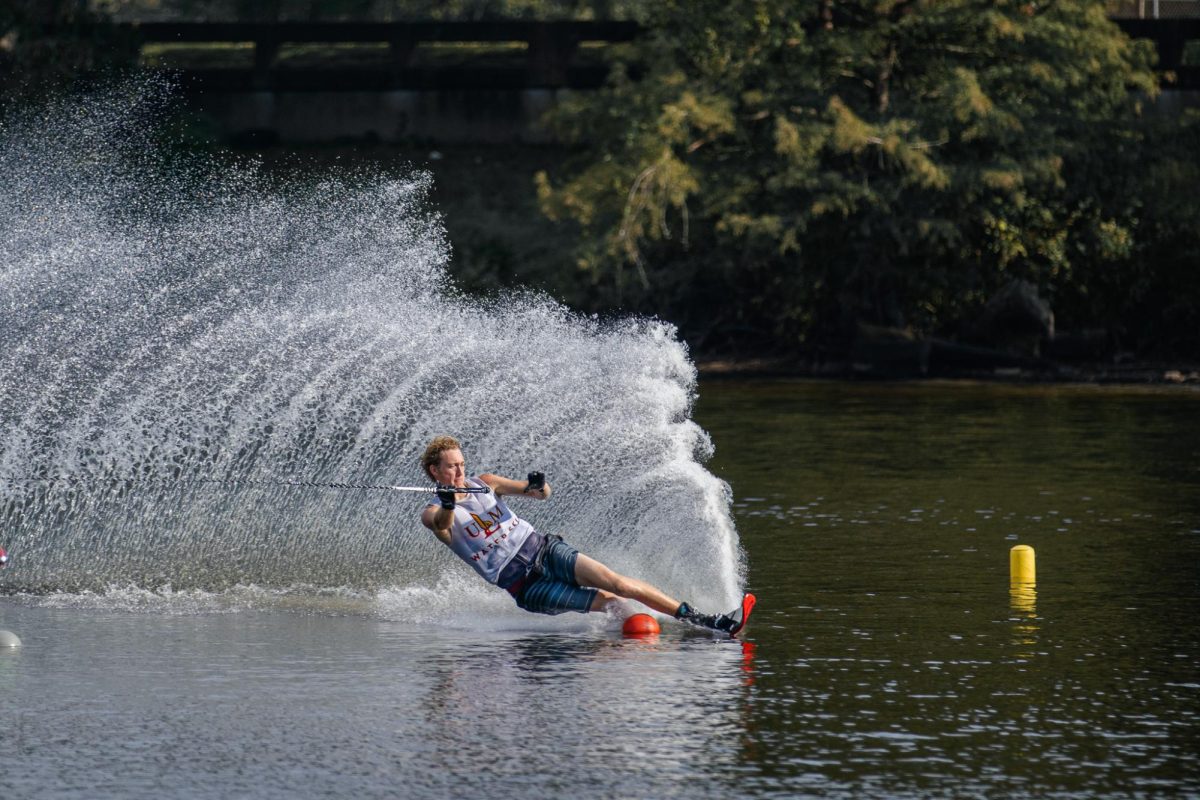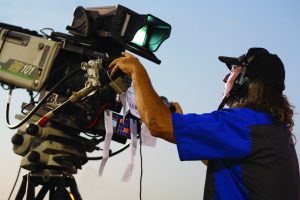 It’s around noon on Friday at Malone Stadium
It’s around noon on Friday at Malone Stadium
ULM’s showdown with Baylor is hours away, but you wouldn’t know it from the surrounding commotion.
Cables snake endlessly across the sidewalks. Thousands of dollars of equipment liters the ground. All courtesy of the Worldwide Leader.
ESPN’s “College Football Friday” may be a one-night affair, but preparation begins well in advance.
By the time last week’s game between UNLV and Washington State ended, work for ESPN’s visit to ULM was in full swing. Around 80 crew members left Las Vegas that night, arriving in Monroe on Wednesday—a 1,500 mile trip. For the next 10 weeks, they will follow the same schedule. No rest for the weary in this job.
ULM’s media relations department preps for this contest just like any other home game, but the presence of ESPN adds to their work load.
‘We print game notes, flips cards and other materials,” Media Relations Director Alex Edwards said. “The only difference being the quantity since ESPN needs a significant amount for production crew and announcers.”
Media relations also works with ESPN during film sessions with ULM players, coaches and on air personalities Carter Blackburn and Rod Gilmore. The footage will air during the live broadcast.
Directly in front of the stadium sits the production truck. Like mission control at NASA, this vehicle is the hive mind of the broadcast. Manned by a staff of around 18, all graphics, video and audio are handled here.
The staff stays in constant contact with ESPN headquarters in Bristol, Conn. From offsite producers to the fans watching at home, their job is to make sure everyone is happy—not exactly the easiest task.
Split-second decision-making is critical. Images from all of ESPN’s nine cameras travel via satellite from the production truck to Bristol, and then to the viewer’s television screen. All in the span of 15 seconds.
Even in this frantic environment, ESPN provides opportunities for college students to get hands-on experience with putting together a football broadcast. Zack Brown, a senior majoring in mass communication, has worked with the production crew in the past, operating the on-field boom microphone.
“It was definitely memorable,” Brown said. “I got to work with different equipment you wouldn’t see on a college campus.”
So what’s next after days of work and countless hours of labor? Time to pack up and move onto the next town. On the road again. Turn the page.


